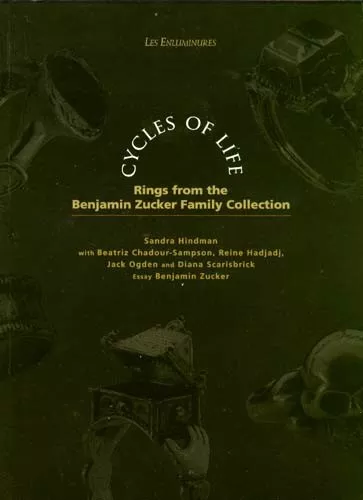Ancient Rings Jewelry Gems Diamonds 200-1900AD Roman Medieval Gothic Renaissance
"Cycles of Life: Rings From the Benjamin Zucker Family Collection" by Sandra Hindman, Beatriz Chadour-Sampson, Reine Hadjadj, and Jack Ogden.
NOTE: We have 75,000 books in our library, almost 10,000 different titles. Odds are we have other copies of this same title in varying conditions, some less expensive, some better condition. We might also have different editions as well (some paperback, some hardcover, oftentimes international editions). If you don’t see what you want, please contact us and ask. We’re happy to send you a summary of the differing conditions and prices we may have for the same title.
DESCRIPTION: Softcover. Publisher: Paul Holberton Publishing (2016). Pages: 260. Size: 8¾ x 6½ x 1 inch; 2 pounds.
Summary: An unparalleled collection of rings dating from the 3rd to the 19th century, presented not chronologically but rather grouped into timeless themes - birth, love, betrothal, marriage, mourning and death - thereby achieving greater insight about the beliefs , sentiments, status, and practices of their former owners. Since his first purchase in 1970, Benjamin Zucker has assembled one of the largest collections of Jewish marriage rings in private hands and a collection of diamond jewelry that is unrivaled, even by De Beers.
With each ring selected for its exceptional quality of stones, rarity, and level of artistry, the collection features many fine examples of signet rings ranging from the 3rd to the 17th century; ancient Roman friendship and engagement rings; medieval posy rings; Renaissance and Baroque wedding rings; Jewish marriage rings, and memorial and death’s head memento mori rings from the 17th to the 19th century. They include a significant grouping of precious diamond-set rings. Many boast provenances dating back generations to Europe’s most prominent collecting families, including the de Clercqs and the Rothschilds.
In this remarkable book, these rings are newly studied by experts, including an essay by Zucker himself. Ultimately, these exquisite jewels – many of which have been the subject of national and international museum exhibitions, loans, and publications – form a remarkable testament to the discerning eye of Benjamin Zucker.
CONDITION: NEW. New oversized softcover. Paul Holberton Publishing (2016) 260 pages. Unblemished, unmarked, pristine in every respect. Pages are clean, crisp, unmarked, unmutilated, tightly bound, unambiguously unread. Satisfaction unconditionally guaranteed. In stock, ready to ship. No disappointments, no excuses. PROMPT SHIPPING! HEAVILY PADDED, DAMAGE-FREE PACKAGING! Meticulous and accurate descriptions! Selling rare and out-of- print ancient history books on-line since 1997. We accept returns for any reason within 14 days! #9030a.
PLEASE SEE DESCRIPTIONS AND IMAGES BELOW FOR DETAILED REVIEWS AND FOR PAGES OF PICTURES FROM INSIDE OF BOOK.
PLEASE SEE PUBLISHER, PROFESSIONAL, AND READER REVIEWS BELOW.
PUBLISHER REVIEWS:
REVIEW: Les Enluminures New York, Paris, Chicago is pleased to present “Cycles of Life: Rings from the Benjamin Zucker Family Collection,” an exhibition of over 40 exceptional museum-quality rings selected from the celebrated private collection of one of today’s world leading gem dealers, experts, and connoisseurs. Spanning from 3rd century A.D. through to the later part of the 19th century, the rings will be on public view together for the first time and for sale at Les Enluminures’ New York gallery from October 31 through December 6, 2014.
The collection features many fine examples of the major types of rings created during the late Rome, Migration Era, Romanesque and Gothic, Renaissance, Baroque, and early Modern periods individually selected for their exceptional quality of stones, rarity, and level of artistry. All but a few exceptions have been on loan to the Walters Art Museum, MD, since 1985. Many boast sterling provenances dating back generations to Europe’s most prominent collecting families, including the de Clercqs, and the Rothschilds as well as from the celebrated jewelry collectors Dame Joan Evans, Ernest Guilhou, Ralph Harari, and Melvin Gutman. Prices range from about $15,000 to the low seven figures.
The Benjamin Zucker Family Collection is renowned for its breadth and depth in certain areas, such as precious colored stones, Jewish marriage rings, and diamonds. Zucker began assembling his collection in 1969, when enchanted by a gold, enamel, and filigree 17th-century Jewish marriage ring, which was part the Melvin Gutman collection auction of antique jewelry at Sotheby Parke Bernet.
Prepared to commit his entire savings to win this one lot (the ring remains with the Zucker family), Benjamin, who was 29 at the time, was fortunately able to afford five of the six similar rings offered at that sale. This purchase proved life changing, prompting him to join the family business of dealing in gems and precious stones. Since his first purchase, he has assembled one of the largest collections of Jewish marriage rings in private hands along with, as noted by jewelry historian Diana Scarisbrick, “a collection of diamond jewelry that is unrivalled anywhere, even by De Beers.”
As the only type of jewelry worn continuously through the ages, finger rings have held many ceremonial facets and functions throughout history. Rather than presented chronologically; the rings will be displayed in sections organized according to timeless themes that form the cycles of life: birth, love, betrothal, marriage, mourning, and death.
Included among the vast array of styles illustrating these themes will be Signet rings ranging from the 3rd-17th centuries; Ancient Roman friendship and engagement rings; medieval Posy rings; Renaissance and Baroque wedding rings; Jewish marriage rings from the 17th-19th centuries, and memorial and Death’s Head memento mori rings from the 17th-19th centuries. They will include a significant grouping of precious diamond-set rings ranging from an uncut diamond from the 3rd-4thcentury, and table-cut, point-cut, and rose-cut diamonds from the 16th-18th centuries, to brilliant-cut diamonds from the 18th century.
According to Dr. Sandra Hindman, founder of Les Enluminures, “we are absolutely thrilled to have acquired this unparalleled collection. It's a dealer's dream come true at every imaginable level--the quality of diamonds, precious colored stones, and Jewish marriage rings offered are superb, as are the accompanying provenances. I have known Benjamin Zucker for a long time, and I have always admired his exquisite taste as a collector, as well as his acute intelligence. It's a wonderful honor to be able to pay tribute to his level of dedication by advancing further scholarship on his collection. We especially look forward to presenting these incredible examples of such dedicated connoisseurship to clients, old and new, as wearable, intimate works of art.”
“Cycles of Life” will detail how rings like sculpture, painting, and manuscript illumination are expressive of the culture of their time, while referencing the enduring allure of certain styles and settings, gems and cutting techniques. Moreover, the exhibition will explore the distinctive role of rings as the most personal forms of jewelry, by shedding greater insight about the beliefs, sentiments, status, and practices of their former owners.
Ultimately, these multifaceted discoveries form a remarkable testament to the discerning eye of Benjamin Zucker, who has assembled this extraordinary collection over last 40 years, many of which have been the subject of numerous national and international museum exhibitions, loans, and publications. Bearing witness to the cycles of life from birth to death, according to Zucker, “if you follow the rings, they are really like compasses leading you to lots of intellectual discoveries.”
Exhibition Highlights: De Clercq Roman Diamond Ring. Roman Empire, 3rd-4th century Once part of the fabled 19th century de Clercq collection of Roman and Byzantine jewelry, one of the stars of the collection on view is a natural, uncut, 1.75-carat diamond with a double pyramid set in a high openwork bezel. It was acquired by Benjamin Zucker in the 1970’s, and , and , and , and , and loaned as the showpiece of the international travelling exhibition, “Diamonds and the Power of Love,” organized by the De Beers Diamond Information Centre, and billed as, “The story of the diamond ring begins here.” On display most recently at the Museum of Fine Arts, Boston, this extremely rare find represents the finest quality and the second largest known surviving rough Roman diamond ring (of which seven examples are in the British Museum and six others are known to exist in private collections worldwide.)
When recounting the significance of this acquisition, Zucker commented, “In the early 1970’s, there weren’t more than a handful of serious ring collectors. Pride of place was to acquire a Roman uncut diamond ring and here was this diamond, very fine quality, symbolizing the power of the Roman mind, Adamas (‘unconquerable’), 4th century and from India…it really became the centerpiece of the diamond story to me…..He then added, “I love the coincidences that you have with this diamond ring. It has passed through many hands since the 4th century, but each person who has had it, I think, has had such a special relationship with it…
I had the impetus to write the biography of Elihu Yale, who made his fortune trading in diamonds and founded the university where I was educated, with Diana Scarisbrick, who wrote extensively about my collection in “Rings: Jewelry of Power, Love and Loyalty” (Jan. 2014). So, I have to say that these rings have brought me an immense amount of luck during my years of collecting and studying.”
Gold Jewish Marriage Ring set in a pendant. Eastern Europe?, 19th century? Long on loan to the Israel Museum, and fashioned into a larger pendant, this special category of ceremonial ring was worn by the bride on her middle finger, and only during the Jewish wedding itself. A multi-colored enameled tiled gabled roof forms the bezel (possibly alluding to the Temple of Jerusalem, but certainly referring to the home the couple would make together), which can be opened to reveal a hidden tablet with the inscription Mazal Tov (‘Good Luck’). The bezel sits on an extra wide hoop elaborately detailed with chainwork, beaded and filigree bosses, and enameled leaf motifs. While the earliest known versions date back to the mid-14th century, these rings recall the ancient Middle Eastern tradition established during the 7th and 8th centuries of purchasing a bride with the gold symbolizing the coin offered by the husband-to-be (stones were not permitted due to their fluctuating value).
Medieval Sapphire and Gold Ring set with a 10th- century Sapphire inscribed in Arabic. Italy, 14th century. From the collection of Ralph Harari, this substantial Gothic ring is set with a large, cabochon Ceylon sapphire. The sapphire, inscribed in Arabic script with the name ‘ABD AS SALAM IBN AHMAD,’ is flanked by dragons and decorated along the sides of the bezel with openwork fleur de lis. The inside of the hoop bears the inscription in Lombard lettering P[ER] AMOR TU E FATO E P[ER] AMOR TU IO TE, the outside PORTO, the whole translating ‘For love thou wast made and for love I wear thee’. Reset four centuries later in a European ring, it testifies to the flourishing gem trade of the period between East and West, and illustrates the long and varied history of gemstones.
Rothschild Diamond, Ruby, and Enamel Gimmel Ring. Germany, dated 1631. From the Rothschild Collection, and featured in the 1981 Colnaghi exhibit in London, this exquisite example of artistic virtuosity in both style and technique features an ornate double bezel set with a lustrous diamond and a deep pigeon blood red, Burmese ruby (prized for their color) supported by clasping enameled vivid red hearts at the shoulders. Hidden cavities underneath each bezel containing the figures of a baby and a skeleton serve as reminders of the vanity of earthly possessions.
Frequently referred to in literature of the period, Gimmel rings (from Latin gemmel, ‘twin’) were popular during the Renaissance. Used as love tokens and as marriage rings, they are composed of twin hoops that are fitted together. According to Benjamin Zucker, “Of course I see a beautiful ruby and diamond, very clear in color, and then the intricacy, but what tops all that is the philosophical statement made by this ring that life does not continue forever, and it’s sound to think of one’s last days throughout one’s life.”
The double hoop, engraved with the Latin inscription from the marriage service, translating ‘What therefore God has joined together, let not man put asunder,' confirms that it was worn as a wedding ring. Moreover, the insides of the hoops are inscribed with the names of the couple: Jacob Sigmund von der Sachsen and Martha Wurmin, with the date 1631 [sic 1531?] engraved on one of the bezels.
Perpetual Calendar Ring. Gold and Black Enamel, England, circa 1830. Gold and enamel rings in the form of calendars with moving parts allowing for perpetual use were popular accessories in the 19th century, particularly for the wealthy. This fine example includes two bands framing the hoop. Highlighted in black enamel, the days of the week are located at the top band, with the months of the year appearing at the bottom, and the numeric dates located in between.
A fully-illustrated catalogue published by Paul Holberton, London, will accompany the exhibition. Divided into four sections: birth, marriage, death, and eternity, the catalogue will consist of detailed descriptions of every ring; an essay by Benjamin Zucker, "My Rings in the Journey of My Life,“ an introduction by Sandra Hindman, "The Cycle of Life and Finger Rings", and an extensive Bibliography.
Contributors include noted specialists Jack Ogden, Chief Executive of the Gemological Association of Great Britain, on Ancient Rings and Diamond Rings; Reine Hadjadj, independent scholar, on Merovingian Rings; Sandra Hindman on Gothic Rings; Diana Scarisbrick, author and jewelry historian, on Renaissance Rings, and Beatriz Chadour-Sampson, jewelry historian, and former Curator of the Victoria & Albert Museum’s William and Judy Bollinger Jewellery Gallery, on Early Modern Rings and Jewish Wedding Rings.
Les Enluminures was founded in Paris in 1991 by Dr. Sandra Hindman in association with the Chicago-based business, and opened its New York gallery in May 2012. Specializing in manuscripts and miniatures from the Middle Ages and the Renaissance, the gallery also offers for sale jewelry dating from c. 300 to 1650 A.D. including a wide range of rings from the Early Christian and Byzantine, Early Medieval, Gothic, and Renaissance and Baroque periods. It organizes four or five exhibitions a year, some travelling and in collaboration with other dealers, which are often accompanied by catalogues.
Les Enluminures exhibits at many prestigious art and antique shows, including: The European Fine Art Fair (TEFAF) in Maastricht; the Winter Antiques Show in New York, and Masterpiece in London. International clients of the gallery include: the Musée du Louvre in Paris; the Metropolitan Museum of Art in New York; the National Gallery of Art in Washington D.C.; the J. Paul Getty Museum in Los Angeles, as well as many other institutional and private clients worldwide.
REVIEW: Diana Scarisbrick is a historian specializing in jewelry and engraved gems. Her previous books include Rings: Jewelry of Power, Love and Loyalty and Portrait Jewels: Opulence and Intimacy from the Medici to the Romanovs. She is a Research Associate at the Beazley Archive, Oxford, and recently collaborated with Sir John Boardman on The Marlborough Gems. Patricia Bayer is an art historian who has written extensively on Art Deco design and architecture. Her books include Art Deco Architecture, Art Deco Interiors, and Art Deco Postcards. She lives in Connecticut. Becker, a member of the British Society of Jewellery Historians, lectures on jewelry in Britain and the USA.
TABLE OF CONTENTS:
My Rings in the Journey of my Life by Benjamin Zucker.
Rings and the Cycles of Life.
Birth.
Marriage.
Everyday Life.
Death.
Eternity.
PROFESSIONAL REVIEWS:
REVIEW: "Cycles of Life: Rings from the Benjamin Zucker Family Collection" celebrates 40 years of collecting by one of the world’s most notable gem dealers. The book is the third in Hindman’s series on recent exhibitions at Les Enluminures, her gallery specializing in manuscripts, miniatures, and jewelry from the Middle Ages and the Renaissance. Hindman presents a selection of rings from the Zucker collection, much of which has been on loan to the Walters Art Museum in Baltimore since 1985. They are organized according to the talismanic, symbolic and commemorative roles rings have played in birth, marriage, death, and everyday life, and even as a symbol of eternity.
Although organized by life cycles, the rings also document the changes in styles through the ages. Hindman describes the forces that were often behind these changes, such as the discovery of Brazilian diamonds, which caused the proliferation of diamonds in rings; and the wars, disease, and plagues of the 1600s that led to the commemorative “memento mori” rings. It is also intriguing to see the continuity of jewelry design. Many of the pieces would not be out of place in a modern jewelry store: diamond solitaires, with the stones set high and with open sides so that light can enter; clusters of small diamonds that give the impression of greater size; and trios of diamonds set on the shoulders of rings.
Hindman opens each section with an appropriate illustration from a medieval or Renaissance manuscript. Other reproductions of paintings and illuminations show how rings were actually worn in the past. My favorite illustration is from the beginning of the “Everyday Life” chapter. It shows a busy jewelry shop in the Middle Ages, with cloths spread with gems on the counters, and jewelry and vessels displayed on the shelves in the back. Change the clothing and it could be almost any family-run jewelry store today.
As Hindman notes early on, rings often fit into multiple categories, and Cycles of Life is not meant to force them into rigid classifications. Instead, the book considers how, since the dawn of history, rings have encapsulated our hopes, our desires, our fears. "Birth” includes rings that offer prayers to Mary and Christ—both virgin births. A spectacular “gimmel”—or twin—ring, with its engraved and enameled interlocking shanks, opens to show a figure of a baby on one side and a skeleton on the other. It serves as a reminder of the importance of humility, signaling that the end of life is death, and that all things pass.
“Marriage” features a broad selection of elaborate Jewish marriage rings—probably only worn during the wedding ceremony. Fascinating “key” rings indicate that, upon marriage, wives took on the keys to the stores and the responsibility of feeding the household. Most of the rings have been decorated with loving sentiments. Hindman traces the shift from the medieval practice of engraving sentiments on the outside of the ring shanks, in a public display, to the Renaissance practice of engraving them privately inside the rings.
“Everyday Life” illustrates seal rings used for signing documents, rings engraved with crests and coats of arms identifying families, and gemstone rings worn not necessarily for vanity, but to invoke the special power and properties often associated with those stones. Medieval rings in the “Death” section show the well-warranted fears of mortality in that era. They are inscribed with charms and prayers, and set with stones believed to have magical properties. “Death jewelry,” writes Hindman, “appeared to have enjoyed a vogue” in the late Renaissance. These rings, worn in remembrance of a lost loved one, might today be considered gruesome: decorated with skulls and bones, or containing the hair of a deceased person. Such rings were often set with diamonds, a symbol of eternal life.
Finally, “Eternity” tracks the evolution of the diamond ring from ancient Rome to the modern era. As Hindman writes, this section presents “a kind of mini-history of the diamond ring,” following the history of setting and cutting. Known since antiquity for their indestructibility, diamonds quite naturally became a symbol of eternity—hence their eventual use in betrothal and wedding rings. Diamonds represented the enduring nature of a monarch’s reign and, perhaps not inconsequentially, were believed to protect against poisoning. As already mentioned, diamonds in memento mori rings signified the eternal nature of the soul. The inclusion of perpetual calendar rings seems a bit out of place among so many diamonds, but is appropriate to rings dealing with eternity. This section acknowledges Benjamin Zucker’s long love affair with diamonds and diamond jewelry, and the important place they hold in his collection.
"Cycles of Life" is primarily a catalog of an exhibition of the same name at Hindman’s Les Enluminures gallery in New York that ran from Oct. 30 to Dec. 6, 2014. Excellent notes on provenance and sources as well as comparable pieces make this a valuable resource for the specialist. It also makes absorbing reading for non-specialists with an interest in jewelry history; the notes and bibliography provide gateways to further study. Comparison pieces show how styles influenced and were influenced by others. Descriptions of shank shape, enameling and setting techniques, manufacturing methods, and metal types offer fascinating windows into the superb skills of jewelers through the ages. Notes on gemstones serve as a reminder of the extent of trade in the ancient world: Garnets from India and emeralds from Egypt appear in ancient Roman rings.
In addition to the breadth of the collection, the quality of the pieces is astonishing. Many are in excellent shape, with gemstones and even enameling in place. Excellent photos taken from multiple angles allow the reader to examine minute details of each ring, from enameling and engraving to areas of damage and repair. In addition to the five sections—Birth, Marriage, Everyday Life, Death, and Eternity—the book includes a preface by Benjamin Zucker outlining his initiation into the world of ancient jewelry as a young man just out of Harvard, through his lifelong habit of collecting. There is also a bibliography of Zucker’s writing, and a separate bibliography of references. "Cycles of Life would make a worthwhile addition to the library of anyone interested in jewelry history. [Gemological Institute of America (GIA)].
REVIEW: A rare exhibition and sale of rings will be held at the Les Enluminures New York gallery this autumn. Titled "Cycles of Life: Rings from the Benjamin Zucker Family Collection", the exhibit will showcase more than 40 museum-quality rings from the third century to the later part of the 19th century. Les Enluminures, a specialised trader in manuscripts and miniatures from the Middle Ages and the Renaissance, with galleries in New York, Paris and Chicago, also handles rings and jewellery from the same periods and has a fascinating and highly didactic webpage dedicated to rings.
Many of the rings in the exhibition were loaned to the Walters Art Museum in Baltimore, famous worldwide for its extensive jewellery collection. However, this is the first time that the entire Zucker collection will be on display in one venue. Zucker is an esteemed gem merchant and author of scholarly publications and practical guides about gems and jewels, as well as works of fiction. An illustrated catalogue published by Paul Holberton, London, will accompany the exhibition, which will include contributions by Zucker, Sandra Hindman, founder of Les Enluminures and leading expert on Medieval and Renaissance manuscript illumination, and Jack Ogden, chief executive of the Gemmological Association of Great Britain.
Among the standouts of the collection is a Roman diamond ring that dates back to the third or fourth century. Once part of the de Clercq collection of Roman and Byzantine jewellery, the ring features a central, natural uncut diamond with a double pyramid set in a high openwork bezel. It was acquired by Zucker in the 1970s, and loaned as the showpiece of the international travelling exhibition, "Diamonds and the Power of Love," organized by De Beers. The diamond giant, keen to validate historical roots for its 'romance and diamond' connection, declared that "the story of the diamond ring begins here". It was most recently on display at the Museum of Fine Arts, Boston and is the second largest known surviving rough Roman diamond ring, of which only 13 are believed to be in existence.
Other standouts are an Italian 14th century sapphire and gold ring set with a 10th century sapphire inscribed in Arabic and a German 1631 diamond, ruby, and enamel Gimmel Ring, from the Rothschild Collection. Prices start from "about $15,000 to the low seven figures". Les Enluminures New York gallery is at 23 East 73rd Street. The rings will be available for view from 31 October - 6 December. [The Jewelry Editor].
REVIEW: “Cycles of Life: Rings from the Benjamin Zucker Family Collection,” will come to end on December 6. So time is running out to view a private collection of more than 40 rings that run from the 3rd to the 19th centuries. In addition, to it being on public view at till December 6 at the Les Enluminures New York gallery, 23 East 73rd St. This is the first time that the entire collection is on display together and it will be the last as the entire collection is for sale.
Zucker is a well-known gem merchant and author who’s written scholarly publications and practical guides about gems and jewels, as well as novels. An illustrated catalog published by Paul Holberton, London, will accompany the exhibition, which will include contributions by Zucker, Sandra Hindman, founder of Les Enluminures, and Jack Ogden, chief executive of the Gemmological Association of Great Britain. Many of the rings in the exhibition were previously on loan at the Walters Art Museum in Baltimore, which is known for its extensive jewelry collection, and a few pieces were at other museums.
“Zucker is a great private collector and owns countless jewels,” said Cecilia Bonn, Les Enluminures Marketing and Communications director. “He really wanted the work cataloged. Sondra is good at applying scholarship to collections and specializes in Medieval and Renaissance manuscript illuminations, and Roman and byzantine jewelry. There’s a real compatibility here.”
Among the standouts is a Roman diamond ring that dates back to the third or fourth century. Once part of the de Clercq collection of Roman and Byzantine jewelry, the ring is centered by a natural uncut diamond with a double pyramid set in a high openwork bezel. It was acquired by Zucker in the 1970s, and loaned as the showpiece of the international traveling exhibition, “Diamonds and the Power of Love,” organized by the De Beers. The diamond giant declared that “the story of the diamond ring begins here”. It was most recently on display at the Museum of Fine Arts, Boston. It is second largest known surviving rough Roman diamond ring.
“The Roman uncut diamond ring one of 12 in existence that we know of,” Bonn said. “Seven of the rings are in the British museum and six are in private collections.”
Other standouts are an Italian made 14th Century Medieval sapphire and gold ring set with a 10th- century sapphire inscribed in Arabic; and a German-made 1631 diamond, ruby, and enamel gimmel ring, from the Rothschild Collection. [Jewelry News Network].
REVIEW: Selected from the private collection of one of today's leading gem dealers, experts, and connoisseurs, this exhibition of over 40 exceptional, museum-quality rings on view and for sale will detail the enduring allure of certain styles, settings, gems, and cutting techniques. Spanning from the 3rd century A.D. through to the later part of the 19th century each ring has its own story. Renowned for its breadth and depth in precious colored stones and diamonds, most of the Benjamin Zucker Family Collection has been on loan to the Walters Art Museum since 1985. Celebrating the timeless allure of rings as symbols of power, prestige, passion, and personal identity, many of these superb selections boast sterling provenances, including the de Clercqs and the Rothschilds.
Organized around themes encompassing the cycles of life from birth to death, the vast array of styles on display will include: •Signet rings ranging from the 3rd-17th centuries, •Ancient Roman friendship and engagement rings, •Medieval Posy rings, •Renaissance and Baroque wedding rings, •Jewish marriage rings from the 17th-19th centuries, •Memorial and Memento Mori rings from the 17th-19th centuries. [GemGossip.Com].
REVIEW: "Cycles of Life: Rings from the Benjamin Zucker Family Collection” exhibition was held in New York, Paris, and Chicago that allowed visitors to see over 40 exceptional rings that were hand selected from celebrated private collections from one of today’s world leading gem dealers, experts, and aficionados.
The collection of rings span from 3rd century A.D. through the later part of the 19th century, each were selected due to their exceptional quality of stones, rarity, and artisan detailing. Various eras such as late Rome, Migration Era, Romanesque, Gothic, Renaissance, Baroque, and early Modern periods are represented and come from some of Europe’s most prominent jewelry collecting families such as de Clercqs, and Rothschilds. The price range starts about $15,000 to the low seven figures.
The rings will be displayed in various sections that are organized according to the themes of the cycle of life: birth, love, betrothal, marriage, mourning, and death. The cycles of life will explain how rings express the specific culture of their paradigm, while simultaneously referencing the allure of certain styles, settings, gems, and cutting techniques. [Diamond Dream Jewelry].
REVIEW: Throughout history and across the world, rings have held a special value – often symbolic and sentimental as well as monetary. A new exhibition at Les Enluminures makes this beautifully clear: until 6 December, a selection of rings from the Benjamin Zucker Family Collection will be on display – and for sale – in their New York space. ‘Cycles of Life’ brings together exceptional examples from the third century AD to the late 19th century, and groups them according to broad themes such a marriage, death, and eternity. We spoke to Sandra Hindman to find out more.
Tell us about this collection – what makes it so special?
Firstly just the quality of the stones and the workmanship. Benjamin Zucker is a precious stone dealer himself, so he collected with quite an eye for that. But one of the really special things is that the rings have such sterling provenance. Provenance is an issue in the art field generally, and especially with rings from antiquity and Byzantium.
Without provenance, the Roman octahedral diamond ring in the show would have a significantly different value. But we know it was not only in the Boston Museum of Fine Arts and the Smithsonian, but in the de Clercq collection around about 1900 – most of which went to the Louvre. And other major collectors – the Rothschilds, Ralph Harari, Ernest Guilhou, and so on – are all represented. I honestly don’t think you could put together a collection like this today, because the rings from these collections are mostly in museums now: they’re not going to recirculate.
How did you come to know Benjamin Zucker?
Neither of us can remember! The world of early jewellery is small; maybe even smaller than the world of medieval manuscripts, which is my other specialism. I think we were introduced at an art fair by a mutual friend and dealer, Derek Content, around 15 years ago.
What are the standout pieces in the show?
The octahedral diamond ring I mentioned earlier, and the Renaissance gimmel ring (pictured). I’ve been able to track that ring to the salt mines in Nazi Germany: it was stolen from the Rothschilds and restituted after the war. It’s gone on a long journey. The third highlight is an absolutely spectacular medieval inscribed sapphire ring.
Are those your personal favorites too, or are there others you’re particularly attached to?
I’m like a mother with lots of children who finds it difficult to choose between them. Which is my favourite if I were going to wear one? My favourite for the colour of the stone? For the setting? Which do I think is most valuable? I don’t know; I just really like them all.
What’s the market like for rings today?
I think it’s very good. It’s a small market, but there are private collectors worldwide – European, American, some Japanese and Asian – plus a handful of museums that buy, such as the musée de Cluny in Paris.
The rings are beautiful decorative items but also highly symbolic. Do you think we still bestow that level of meaning on jewellery today?
I don’t know about symbolic meaning today, but I’m quite interested in studio jewellery. The technical virtuosity of someone like Wallace Chan is really very impressive. But the times have changed. With medieval rings it wasn’t necessarily the craftsmanship but the magic that was contained in the stone or the person you got it from. I do think rings are especially captivating throughout history, including today, because they’re so intimate.
You’ve grouped the rings according to themes rather than chronologically. Has your approach resulted in any unexpected parallels between items?
Maybe not parallels, but I think it’s allowed us to think about the rings in different ways, and to explore more deeply their symbolism vis–à–vis human lives. We arranged it that way partly in honor of Benjamin. He’s very interested in family; this is a family trust, and his daughter Rachel Zucker is a famous poet and writes about family, mothers and children, life cycle events. It just seemed appropriate, and I was tired of the same old categories. I thought this would give us access into something new.
Cycles of Life: Rings from the Benjamin Zucker Family Collection’ is at Les Enluminures, New York, until 6 December. [Apollo International Art Magazine].
REVIEW: I had no idea when I entered at Les Enluminures’ New York Gallery for an advanced sneak preview of the exhibit and sale of “Cycles of Life: Rings from the Benjamin Zucker Family Collection” that five awe-inspiring, ancient and antique Jewish marriage rings would lead me back to the part of my past that I had not recognized since my childhood. These miniature and masterful works of cultural history spoke to me of love, of building a happy home with the warmth of generations of family and the traditions that reminded me I had misplaced my roots. The timing of viewing these rings was perfect as the Jewish holidays would begin soon with Rosh Hashanah (evening of September 24 through 26, 2014 (The Jewish New Year) and then Yom Kippur (the day of atonement) from the evening of October 3-4, 2014.
In my memoir of 2012, My Charmed Life, Rocky Romances, Precious Family Connections and Searching for A Band of Gold (NAL/Penguin), I linked together my most cherish jewelry with the significant memories each piece represented in my life. As an avid antique ring collector — a theme which acts as a metaphor for various relationships in my memoir — I immediately accepted the invitation to preview the 40 plus rings assembled together for the first time for public view and sale at Les Enluminures’ New York gallery from October 31 through December 6, 2014. For the gallery exhibit, the rings will be displayed by themes that form the cycles of life: birth, love, betrothal, marriage, mourning, and death. While all are breathtaking in their sentimentality, meaning and historical references, my focus became the rings that would conjure up remembrances of my youth.
I grew up, a less than reformed Suburban Jewish girl with divorced parents, both whom remarried Italian Catholics. My two younger brothers and I celebrated all holidays and had Christmas trees with a star on top in the living room and a Menorah with a center star in the dining room. We had simple Passovers while readying to paint and hunt for Easter eggs. As far as marriage bands in my immediate family — my father proposed with a watch instead of a ring. My stepfather slipped an antique diamond eternity band on my mom’s left finger during her second wedding ceremony in front of a Justice of The Peace.
To say that I was reformed in my teens up to my middle-aged years might be considered an understatement. In her more tenacious, non-PC days my maternal grandmother — Nana Ida, asked, as I was turning 40, “Why do you only date Mobster types, members of the IRA and Italian Playboys who live 5000 miles away?” (referring to my teenage boyfriends in NJ, my soulful lad from Dublin and my Milanese man with the curled vowels) she continued, “Why not find a nice Jewish man to settle down. Go to the hospital cafeteria at Mt. Sinai for lunch with wearing make up and a nice dress and maybe you can find a doctor there?” she added.
The memories of my acting on my Jewish heritage actually date back to my grandparents, particularly Nana Ida and Papa Rubin, my maternal grandparents and David and Fanny my maternal great grandparents. With the exception of weddings and funerals — the last time I was in a synagogue was when Ida and Rubin lived in Brooklyn and belonged to a conservative temple. My mom (their only child) drove to Brooklyn from New City, NY for Rosh Hashanah and Yom Kippur. I remember my grandfather being with his four brothers in temple all day and my grandmother and her friends in hats and little suits taking breaks outside and gossiping and sharing recipes for the food that would break the Yom Kippur fast. I turned my nose at all of these “delicacies”, except for the potato “latkes” and applesauce, which she saved in a separate Tupperware container for me.
Papa Willy and Nana Anna (my father’s parents) were practicing Jews in as much as Ida and Rubin. I was close to them and the other relatives on the paternal side of my family, but with the divorce came a separation of holiday visits. We are Ashkenazi (from Eastern Europe — Russian descendants) on both sides of the family. When the grandparents moved to Florida or joined us in decorating our Christmas trees and painting Easter eggs, I had only Nana Ida to tell me stories and explain the Jewish wedding ring traditions — those that she knew.
It was Nana Ida who taught me in a Jewish marriage ceremony, in ancient times, coins were typically given. Rings replaced them in most of Europe “because a circle symbolizes endless love.” She also taught me that rings placed on the finger during the ceremony cannot have any precious stones in them — they must be created only from metal but can have textural or enamel work. I still have her thin white gold band, my great grandmother Fanny’s engraved floral ring and my grandfather Rubin’s plain wide, solid gold style. Although I have no children of my own and I am still looking for someone to place a “band of gold” on my finger, I have given up “the mobsters and Italian playboys.” I am getting closer to a commitment to a solid man. I have one niece and two nephews, each of whom I have designated one of my inherited rings to be passed down.
As jewelry writer and author and consultant for designers in the industry, I have learned more about the history of the Jewish marriage rings, religious messages and culture through lectures given by scholars, jewelry connoisseurs and collectors such as Benjamin Zucker, who began assembling his collection in 1970, when enchanted by a gold, enamel, and filigree 17th-century Jewish marriage ring, which was part the Melvin Gutman collection auction of antique jewelry at Sotheby Parke Bernet. Twenty-nine at the time, he was able to afford five of the rings offered at that sale. This purchase proved life changing, prompting him to join the family business of gems and precious stones.
I have also drawn from the wisdom of Les Enluminures owner, author and historian Dr. Sandra Hindman and the writings of jewelry expert and author, Diana Scarisbrick’s — in her book, Rings: Jewelry of Power, Love and Loyalty, in which all of the rings on view in the exhibit and sale are referenced. In Scarisbrick’s book, she writes, “The rings used in Jewish weddings form a special category being ceremonial and only used at the wedding. “ She is talking about rings that are communal and part of the synagogue and were not practical for everyday wear. In a 19th century version (such as the one in the exhibit/sale) the roof of the house lifts up on a hinge to reveal a message of good wishes in Hebrew “Mazel Tov” — Good Luck, which is the Ashkenazi tradition — wishes the couple good fortune in their life journey.
This reminded me of one of my two brothers, who married a conservative Jewish woman after both my mom and dad passed away unexpectedly and much too young. He asked Nana Ida and I to walk him down the aisle at the temple and I gave him Nana’s band to present to his wife during the vows. During the ceremony, much in my grandmother’s own tradition, she leaned over and mouthed, “it should only happened to you one day.” We both giggled with joy and love for the bonds that would carry on. Benjamin Zucker explains it best about his own ties to his celebrated ring collection he started in the ‘70s, particularly the Jewish wedding rings that are in the exhibition/sale.
“These Jewish marriage rings are so magical; you feel the joy of the person in Venice, wearing the communal ring and then returning it to the Sephardic synagogue. I was so struck by the story and ring that I wrote my novel “Blue” based on a Jewish wedding ring that passes through the hands of people through generations. It’s a love story and there is always is a talismanic sense of luck and joy that a ring relates about its owners.”
Being in the same room as these rings, I complete understood. I could feel the essence of their provenances and hear the tales of their past. I was in awe when Keegan Goepfert, Director, Vice-President, Les Enluminures Chicago and New York explained the story of a ring featuring a motif of two hands unified, “a gesture symbolizing the acceptance of the marriage contract. The symbolism of clasped hands or a heart on a betrothal or wedding ring is a Western European tradition, but the clasping of an architectural structure (like the castle or house in this ring) is an iconographic feature characteristic of Jewish marriage rings.” The architectural structure is said to either represent the Temple of Jerusalem or the house in which the couple will create their home.
Sandra Hindman, Founder and Owner, Les Enluminures Paris, New York, Chicago, talks about another ring that has since been turned into a pendant. “This jewel consists of a ring that has been adapted to form a container, either to use as a memento of a loved one, or possibly as an amulet with suspended pendant. The ring appears to have been made earlier, and the transformation into a container or amulet case dates from a later period.” The three other rings in the exhibition/sale are all spectacular specimens of their time periods, sentiment, meaning and their culture place in history.
This year, as the holidays roll around, having been reminded of my own history again through the preview of these rings, I will recognize and rejoice in my roots, and perhaps instead of “the hospital cafeteria”, I will put on “a little makeup and a nice dress” and go to synagogue to honor Nana Ida. And, smile when I hear her say “it should only happen to you one day.” [Beth Bernstein].
READER REVIEWS:
REVIEW: Exceptional historical information and perspectives.
ANCIENT JEWELRY: The art of the jeweler. Metalsmiths' shops were the training schools for many of the great artists of the Renaissance. Brunelleschi, Botticelli, Verrocchio, Ghi-berti, Pollaiuolo, and Luca della Robbia all were trained as goldsmiths before they embarked upon the higher arts. The goldsmith made silver vases for the dinner tables of cardinals; knights sent sword blades to be mounted in rich hilts; ladies came to have their jewels set; princes needed medals to commemorate their victories; popes and bishops wished to place chased reliquaries on the altars of their patron saints; and men of fashion ordered medallions to wear upon their hats.
Although many materials-including iron-have been used for jewelry, gold is by far the most satisfactory. One could not expect the same results from any other metal, for the durability and the extraordinary ductility and pliancy of gold and its property of being readily drawn out or flattened into wire or leaf of almost infinite fineness have led to its being used for works in which minute-ness and delicacy of execution were required. Gold may be soldered, it may be cast, and any kind of surface, from the rough to the highest possible polish, given to it. It is the best of all metals upon which to enamel.
Gold was easily retrieved from the gravel of river beds, where it was washed from the eroded rocks; hence it is one of the oldest metals known. Unlike most metals, gold does not tarnish on exposure to the air but remains brilliant. Pure gold is too soft for general use, but it can be hardened and toughened by alloying with most of the other metals. Color is one of its important qualities. When the metal is pure, it is nearly the orange-yellow of the solar spectrum. When it contains a little silver, it is pale yellow, or greenish yellow; and when alloyed with a little copper, it takes a reddish tinge-all so effective in varicolored jewelry.
These alloys have an ancient history, electrum, an alloy of gold and silver which assured beautiful hues, having been used by the Egyptians, Greeks, and other ancient peoples. The ancients, from the most remote times, were acquainted with the art of beating gold into thin leaves, and this leaf was used for other purposes besides personal adornment. Gold leaf was used in buildings for gilding wood, and Egyptians, Greeks, and Romans were adepts in applying it. It was no great departure to introduce gilded backgrounds to paintings or figures in mosaic and finally to illuminated manuscripts.
In the use of gold Byzantium went beyond Rome or Athens. When more skill was attained by painters, backgrounds in perspective took the place of those in gold. Early examples of leaf work in this exhibition may be seen in the headdress and jewelry of Queen Shubad's ladies-in-waiting from the excavations of the royal tombs at Ur in Mesopotamia. They date from a period between 3500 and 2800 B.C.
A second step was the cutting of gold leaf into thin strips to make wire. It is still a question whether the art of wire-drawing was known to the ancients. Plaited wire-work, as used in many places and over a wide period of time, is well represented in ancient history. Fusing and soldering are also ancient techniques. Granular work, the soldering of minute grains of gold one beside the other in a line or disposed ornamentally over a surface, was known to the ancient Egyptian jewelers, as well as to the classical, oriental, and barbarian gold-smiths. This traditional technique can be traced through the centuries, splendid granular work of the ancient and modern civilizations being well represented in archaeological finds.
Filigree, the arranging of wires in patterns, usually soldered to a base, is often associated with granular work. The oriental nations, especially the Moors, knew how to execute filigree with rare delicacy and taste, this technique adapting itself particularly to their designs. Embossing and chasing are techniques of widespread use. The relief effect of embossing is produced by various means. A thin pliable sheet of metal may be pressed into molds, between dies, or over stamps, or it may be molded free hand. An excellent example of an embossed gold sheet which was pressed or hammered may be seen in the Greek sword sheath from South Russia. In handwork the sheet of metal is placed against a ground with a yielding surface and the design is raised from the back by a series of punches.
The work of the chaser is closely related to that of the sculptor, the ornament on the face of a casting or an embossed work being finished with chisels or chasing tools. Jewelry was often enriched by stamping, a simple process by which a design is made in depression with a punch., and the gold fixed by heating to redness; and the surface finally burnished. In all countries the work of the lapidary was combined with that of the goldsmith.
Much jewelry depended for its splendor of effect chiefly upon its inlay of brilliantly colored stones, jaspers, agates, lapis lazuli. Much of the commoner kinds of jewelry, such as buckles for the belts of warriors or brooches for the vestments of ecclesiastics too poor to buy silver or gold, were made of bronze, enameled and mercury-gilded. Mercury-gilding is a process of great antiquity. The object was first carefully polished and rubbed with mercury; thin gold was then laid on and pressed down, the mercury being subsequently volatilized, and so forth, or upon colored glass inlays.
The Egyptians and Greeks were incomparable artists in intaglio (cutting concave designs or figures) in gold, and one notes with astonishment the mastery they possessed over the stubborn hard stones, including the sapphire. A Greek gold ring with an intaglio engraving of a girl stretching herself is one of the finest in ancient history. The engraver's art both in cameo and in intaglio attained a high degree of excellence about 500 B.C., which lasted until about the third or fourth century A.D. The classical artists used rich and warm-tinted oriental stones, the increased intercourse with the East after the death of Alexander the Great having a marked influence on the development of the art.
In gem-engraving the ancients used essentially the same principle that is in use today, that is, drilling with a revolving tool. They also used a sapphire or diamond point set in a handle and applied like a graver. In early medieval times gem-engraving was little practiced, but antique cameos were held in peculiar veneration on ac-count of the belief, then universal, in their potency as medicinal charms. With the Renaissance, the art of gem-engraving was revived, and engravers from that time onward have produced results equal to the best ancient work.
Glass in ancient times was so precious that some nations demanded tribute in this fragile material instead of gold. It is said that a citizen invented a method for making malleable glass and was invited to visit the Roman Emperor Tiberius. He brought a vase, which was thrown to the ground but only dented. A hammer again rounded it into shape. Tiberius then asked whether any other man knew the secret of manufacture. The artisan answered no, whereupon the emperor ordered him beheaded.
Glass inlay, widely used from Egyptian times, is often wrongly called enamel. It is not enamel, which, although a vitreous material, is employed in the powdered state and always fused into position by heat, whereas the glass inlay was always cut or molded and cemented into position. This glass inlay is often referred to as paste, which in the modern sense means glass with a high refractive index and high luster employed to imitate the diamond. Good examples of paste may be seen in some eighteenth-century English and French.
For centuries Egypt was the “promised land” of the ancient civilized world, for the Pharaohs had at their disposal enormous stores of gold. The Egyptians excelled in metal-work, especially in gold, and many techniques employed by goldsmiths today can be seen in ancient Egyptian jewelry, particularly for instance the treasure of el LThuin, which was recovered in its entirety and in nearly the same perfect condition in which it had been placed in the tomb; or the jewelry which had once graced the person of the Princess Sit Hathor Yuinet, daughter of King Se'n-Wosret II, who reigned from 1906 to 1887 B.C. and near whose pyramid, at el Lahfin, she was buried.
Her girdle, one of the outstanding pieces of ancient jewelry, is of amethyst beads and hollow gold panther-head ornaments, inside which pellets tinkled whenever the wearer moved. From the same treasure there is the neck-lace with a pectoral of King Se'n-Wosret II. On either side of the pectoral the hawk of the god Horus supports the cartouche of the king and a group of hieroglyphics which signify, "May King Se'n-Wosret II live many hundreds of thousands of years." The pectoral is gold inlaid with lapis lazuli, car-nelian, and turquoise, and the eyes of the shape made of actual flowers, fruits, and leaves, which were presented to guests to wear at banquets and other festivities.
Brilliant color is one of the most attractive characteristics of Egyptian jewelry. It had its origin in the beads, both of semi-precious stones and of faience, which were widely worn during the Old Kingdom (2800-2270 B.C.). Beads of faience of different colors were also in fashion during the XVIII Dynasty. The composition of the broad collars of faience of this period was derived from ornaments of the same engraving, soldering, and metal intaglio.
The Greek jeweler, like the Egyptian, excelled in the arts of embossing and chasing. Greece had little access to precious stones before Alexander's Eastern conquests, and so from the sixth to the fourth century B.C. the jeweler specialized in metalwork. He was a master of both granulated and filigree decoration, and he did exquisite work in plaiting gold into chains and in modeling it into little figures, both human and animal. Much of the best of Greek jewelry is sculpture in little. Ornamental goldwork naturally required more minute workman ship than sculpture in bronze and marble, and excellent modeling often makes little objects impressive as well as intricate.
A few famous examples of ancient Greek jewelry, such as an earring in the form of a siren, is a charming example of Greek jeweler's modeling. Other examples include a pair of earrings of the fourth century B.C. from Madytos on the Hellespont, as well as an eagle and a palmette made of hammered gold sheets; the feathers of the eagle are incised; each leaf is edged with beaded wire; and the fruit is covered with granulation. Another example might be a bracelet, of rock crystal, with gold finials, each finely embossed with a ram's head, which shows skillfully modeled figures, as well as plaited chains, and filigree and granular work of rare minuteness.
The Ganymede jewelry, made soon after 350 B.C., is one of the most precious sets that have come out of antiquity. Most techniques are represented on the earrings, bracelets, brooches, necklace, and emerald ring. On the earrings the figures of Ganymede are solid castings; Ganymede's drapery, the wings and tail. The technique of Etruscan goldwork is much the same as that of the Greek. The metal is thin, it is pressed or beaten out in designs in low relief, and it is further decorated by the surface application of filigree and small granules of gold. Several molds of stone have been discovered, and it is probable that the thin gold was pressed into the mold by means of a metal or agate style, solder being used to fix the separate pieces of gold together whenever necessary. Some of the granulated work is so fine that without a magnifying glass it is almost impossible to believe that the patterns are actually laid on with an infinite number of minute spherical grains. The burial chamber of an Etruscan lady, near Vulci, opened over a century ago, yielded a rich parure.
Archaeologists have recovered several headdresses reflecting the custom Chinese women had of decking their hair with floral ornaments. These are richly colored, and some of the materials used in them, besides gold, are amber, coral, seed pearls, and an exclusively Chinese material-bright blue kingfisher feathers. In Chinese jewelry the art of the metal-worker achieves an exquisite delicacy. A famous golden phoenix crown shows perhaps most clearly of all the works in the exhibition the ability of the goldsmith to take infinite pains. It has more than thirty separate ornaments, made of different con-formations of gold wire and decorated with pearls and other stones.
Many of the ornaments are set on tiny springs so that they quiver with the slightest movement. jade, exquisitely carved. With the exception of pearls, the Chinese did not use precious stones. The prettiness and color of Chinese jewelry tempt one to describe it at length, but according to a Chinese proverb, "A thousand words do not compare with one look." The Japanese also rank high as metalworkers, their sword furniture, the jewelry of the Japanese nobleman, especially showing the subtle skill of the artist in manipulating hard and soft metals. In enriching the fittings many processes of metal ornamentation-relief carving, relief inlay or applique, overlay, incised and recessed carving-are employed. It is the combination of techniques and alloys which makes their work of outstanding interest to jewelers as well as to the amateur. Today these fittings are often worn as jewelry in the West. In Japan sword furniture is frequently signed by masters as well known as famous painters. The Greek jeweler, like the Egyptian, excelled in the arts of embossing, chasing, A glance at the magnificent weapons from Persia, Turkey, and India will remove any impression that the love of personal adornment is a purely feminine attribute. Orientals often wear daggers embellished with silver and semiprecious stones even over their most ragged clothes, which shows that they take life with a gesture. In India perhaps more than anywhere else, jewelry has played a vital role in the life of the people, from the lowest rank to the highest. Although none of the Indian jewelry is much older than the eighteenth century, it represents designs and methods of decoration that go back to much earlier periods, some of them reflecting the influence of Hellenistic civilization. Some pieces are made of gold or silver alone, others are richly set with diamonds, rubies, and emeralds or decorated with enamel. The Greek jeweler, like the Egyptian, excelled in the arts of embossing, chasing, Much of this jewelry was made in Jaipur, which was particularly famous for its enamelwork. A gold bracelet with dragon-head terminals is an outstanding example of combined jeweled and enameled work. The backs of jeweled ornaments were often enameled with fine patterns, so that the reverse of a necklace or pendant would be as fine in effect as the right side. The jewelry of the nomadic Iranian tribes is represented by a few choice pieces cast in gold and chased. These include many Scythian ornaments, winged griffins, stags, and rosettes, which were used as decoration on clothing; and two clasps of about the first century A.D., Sarmatian and Parthian in origin.
The Middle Ages are perhaps best represented by an extensive collection of jewelry from the Morgan collection, of the period of the barbarian migrations and of the Byzantine period. The gold ornaments in the Albanian Treasure (seventh-ninth century) are thought to be the work of nomad craftsmen in the train of barbarian tribes migrating through the Balkans from Central Asia. The splendid collections of Gallo-Roman, Germanic, and Merovingian jewelry, distinctive features of which are the colored glass inlays and the filigree and beaded work in gold, need only be mentioned, for they have been described and illustrated in the catalogues of Seymour de Ricci. They were made from the fourth to the eighth century A.D., the latest probably not exceeding the reign of Charlemagne (742- 814).
It was Charlemagne who stopped the custom of burying the dead with their weapons and jewelry because all the wealth was going into the ground instead of into the treasury. The result is that much fine jewelry was melted down. The Eastern influence which had come westwards after the year 330, when Constantine transferred his court from Rome to Byzantium (Constantinople), is seen in many pieces of ancient jewelry. The goldsmiths followed the Emperor Constantine to Byzantium, and from there came many marvels of art and beauty as presents to the Western churches. The jewelry in the treasure (sixth century) found on the island of Cyprus is in the Eastern style. It was probably buried during the Arab invasion of the island.
About the beginning of the eleventh century the Byzantine influence had been largely spent, and new styles were introduced. Families of monks, animated by one spirit and educated in the same way, lived in monasteries which were schools of ecclesiastical goldsmiths. They built and adorned their churches; they hammered, chased, and enameled gold, silver, and bronze. Altar fronts, pyxes, lamps, patens, chalices, crosses, candlesticks, and reliquaries were made, and most of their motives of design, methods of working, and chemical processes were the common property of the abbeys. Lay craftsmen, too, devoted more of their energies than previously to building cathedrals and creating ecclesiastical art, and there is consequently a close connection between the work of the architect and the mediaeval goldsmith.
This ecclesiastical influence is seen in a late eleventh-century book cover of silver-gilt, ivory, cabochons, and enamel, from the cathedral of Jaca. Before the multiplication of books by printing, their covers had more to do with the goldsmith's art than with that of the binder. Architectural influence is shown in the French thirteenth-century reliquary of Saint Margaret. Reliquaries like this were master-pieces of work in precious metals. They were built up of innumerable plates soldered together, with buttresses, pinnacles, and traceried windows, like little models of churches or small chapels. During the Renaissance, During the Renaissance, everything that could be gold was gold, not only jewelry but plate; and dresses for men and women and even horse trappings were made of cloth of gold. It was an age when the setting of a gem or the molding of a goblet was a matter that would occupy a grave potentate to the exclusion of affairs of state. In order to satisfy the demands of the time Columbus set out not to discover another continent but to find a convenient route to India, the land of gold, pearls, and spices. The Renaissance goldsmiths made the most of the mediaeval tradition in technique and in due course they developed perfection in workmanship. The rich and varied pendants are splendid examples of the renaissance jeweler’s art.
This type of ornament originated in devotional usage, and during the Middle Ages its decoration was almost always of religious significance. The pendant was a conspicuous ornament and was usually of fine workmanship. Portrait medallions, especially those of historical personages, were made by distinguished masters. A splendid pendant, representing Bona Sforza, Queen of Poland, is signed by Jacobus Veron (Gian Jacopo Caraglio) and is dated 1554. The cameo portrait of the queen is sardonyx, her chain and hair ornament gold. The Visconti-Sforza arms on the reverse are enameled gold. Among the enseignes, ornaments worn on the turned-back brim of the hat or cap, one superb historical example is one in gold skillfully embossed.
Cellini, in his “Treatise on Goldsmithing,” explains how such embossing was done. In principle, a sheet of gold is beaten from the back with punches until it is bossed up much like the wax model. He completes the explanation by telling of a visit to his workshop by Michelangelo, who complimented him on a gold medal embossed in high relief. Michelangelo reputedly said: “If this work were made in great, whether of marble or of bronze, and fashioned with as exquisite design as this, it would astonish the world; and even in its present size it seems to me so beautiful that I do not think ever a goldsmith of the ancient world fashioned aught to come up to it!” Another technique explained by Cellini is the “beautiful art of enameling.” A splendid example of this technique may be seen on a fine cups, of red jasper mounted with enameled gold and precious stones. It should be compared with the Cellini cup in the Altman collection.
Personal jewelry of the late seventeenth and eighteenth centuries can be characterized by snuffboxes and carnets de bal (dance programs), precisely executed, showing the quality of the era’s workmanship. Such boxes, of varicolored gold, jeweled, and set with miniature portraits of their donors, were the favorite gifts of kings and princes. They were enormously costly in their day and they have always been precious collectors’ items. Some of them be- longed to persons famous in history, some are signed by famous jewelers, and all illustrate the extravagant vanities of the time. During the seventeenth century, there developed an increasing fondness for faceted gems set close together to produce glittering masses. Gradually the setting was subordinated to the precious stones, and this is the modern style.
VINTAGE JEWELRY: How vintage jewelry brings old-time glamour to the red carpet. Among all the gemstones paraded on the red carpets of Cannes, Venice, Hollywood and New York, some pieces leave an indelible impression. At this year’s Manus X Machina-themed Met Gala, the award for best supporting accessory went to a majestic diamond peacock, its tail curving over one strap of Uma Thurman’s custom-made Ralph Lauren ivory gown. Created as a special order by Cartier in 1948 and comprising 83.89ct of diamonds, the brooch demonstrated the power of vintage when it comes to making a statement on the red carpet.
"Vintage jewelry brings character and a sense of nostalgia to a look," says LA-based British stylist Tanya Gill, who dresses stars such as Kate Winslet, Julie Christie and Jane Fonda. "I love the craftsmanship, the history and the patina. Sometimes I’ll build characters through the jewelry as though I am creating a look for a film."
Gill was responsible for the eye-catching vintage Bulgari bib necklace that Minnie Driver wore to the Vanity Fair Oscars party in 2014. Made in 1965, the necklace caught Gill’s eye at Bulgari’s Decades of Glamour pre-Oscar event. "It struck me as so exquisite in design and colour, with the craftsmanship of the turquoise, cabochon emeralds, cabochon amethysts and diamonds, that it would be a unique statement for the right personality," she says. "It was perfect for the statuesque beauty of Minnie Driver."
It’s not only Hollywood’s grandes dames who carry off vintage glamour. At the Met Gala, Anna Wintour’s 29-year-old daughter, Bee Shaffer, was every inch the ingénue in 19th-century diamond chandelier earrings and a slim diamond headband by the New York-based vintage-jewelry specialist Fred Leighton, while at the reopening of Cartier’s Fifth Avenue mansion in September, Sienna Miller accessorised a fresh, floaty Valentino dress with a suite of diamond and emerald Cartier jewels from the 1920s.
The trend for vintage jewelry on the red carpet was kick-started in 1996, when Prada borrowed a 19th-century opal choker from Fred Leighton for a then-29-year-old Nicole Kidman. "It was a wonderful moment for us," recalls Rebecca Selva, Fred Leighton’s chief creative officer and public relations director. "It commanded tremendous attention because it was so different."
The collaboration sparked a long-term relationship with Kidman and began two decades of "beautiful and iconic moments" for Fred Leighton. Selva cites Charlize Theron’s appearance at the Vanity Fair Oscars party in 2000 as one of her favorites: clasped to the 25-year-old’s tangerine Vera Wang dress were two art-deco diamond clips. "Vera fell in love with the clips and then created the dress around them," says Selva. "The whole image was beautiful; it was Hollywood glamour in the most sophisticated and refined way."
Nowadays, as celebrity outfits are dissected on social media in real time, red-carpet appearances have even more effect on what used to be a very private, elitist market. "The internet has been great in spreading the message about vintage jewelry," says Selva. "There’s so much to discover – people realise it’s not what they thought it was. It’s not your grandmother’s jewelry, and nothing is so rarefied that it can’t be worn. Even our tiaras can be worn as headbands."
For Selva, increased visibility helps to dispel the myth that antique jewelry is outdated. "We have an unbelievable 19th-century diamond snake necklace that looks like the coolest piece anyone could wear, yet it’s almost 120 years old," she says. "It’s waiting for its red carpet moment."
Vintage jewelry’s reputation in the fashion world has been elevated further by Fred Leighton’s collaboration with Net-a-Porter, which began in 2014. Both antique jewels and new pieces from the Fred Leighton Collection (which are inspired by vintage designs) are available online, with prices ranging from £1,500 for a simple pair of drop earrings to tens of thousands for signed vintage pieces by the likes of Cartier, David Webb or Buccellati.
"We’ve had a really positive response, with jewelry often selling out within minutes," says Sophie Quy, fine-jewelry buyer at Net-a-Porter, who travels to the Fred Leighton store in New York up to four times a year to look for pieces. Diamonds, pearls and turquoise are bestsellers, along with chunky gold chain bracelets that customers wear stacked with modern designs. The site also works with Fred Leighton to source vintage pieces on demand.
Antique jewelry has also found a place in uber-fashionable department store Dover Street Market, which carries a selection of vintage rings and Victorian and Georgian tiaras by British jeweler Bentley & Skinner alongside its roster of modern brands. This departure from the notion of dusty vintage emporiums reflects an increasing desire to own something one-of-a-kind. "Vintage jewelry is much more interesting than anything you can buy now," says Max Michelson of the London vintage specialist SJ Phillips. "Instead of being tied to this year’s range, we have 400 years’ worth of ranges, so you’ll always find something that fits."
He says 20th-century pieces are far and away the most popular. "Everyone wants art deco because it’s stylish and nicely made, and being set in platinum it looks closer to modern jewelry than earlier pieces, which are set in silver. There’s also interest in bold pieces from the 1950s and ’60s." Unlike its American counterpart, SJ Phillips doesn’t shout about red-carpet appearances. "That type of advertising works in the States but not here," Michelson says. "Even if a piece has been worn by someone famous, we don’t tell people."
While signed vintage pieces carry a price premium, there are smart buys to be found. "There are some under-appreciated American makers such as Raymond Yard," says Michelson. "But there are also unsigned pieces that are a match to the big names but half the price." The main thing is that it speaks to the wearer. "We never claim that anything is going to be a good investment. It might be, but we’re not an investment broker." Rebecca Selva agrees: "If jewelry is fine and fabricated beautifully, it will hold its value, but I would certainly never sell it as an investment. It’s more about the joy you get from it." [Telegraph (UK)].
VINTAGE JEWELRY: Dust off your old jewelry boxes and open-up the family vault because you might just be sitting on a fortune. That’s the message from London auctioneer Bonhams this week, as they announced new figures showing the soaring value of vintage jewels. Bonhams say the value of antique and period jewelry has increased by over 80% in the last decade - outdoing average house prices in England, which increased by 47% over the same period. Estimates have been abandoned on auction days, as items have been fetching double, sometimes triple, their predictions amid fierce bidding wars. And it’s prompted the auctioneer to launch a campaign urging the public to seek valuations for any forgotten gems they might have stashed away.
“An Art Deco Cartier emerald and diamond bracelet that we sold in December was estimated at £80,000-£100,000 and it made £210,000,” says Jean Ghika, head of jewelry at Bonhams UK and Europe. “These types of instances are our key indicators of a gain in momentum. It’s the quality of craftsmanship that is resonating with buyers, the types of stones that were used back then, compared to a modern piece, are special.” Vogue’s jewelry editor Carol Woolton isn’t surprised by the jewelry market’s strength in the current economic climate. “There are so few investments that are reliable right now - stocks are in a state of insecurity, but gold and diamonds will never be a risky purchase for a rich person trying to maintain their wealth,” she says. “There are limited resources in the world, mines will run out and there is a finite number of precious stones - that’s what gives it a rarity value.”
Even if you haven’t got a spare Cartier brooch in the attic to auction off, it’s worth noting that the trend described extends beyond designer names, and applies to specific stones, metals and eras, too. If the catwalks are revisiting silhouettes from a particular decade, the interest will echo through the jewelry world. “Signed items from the Art Deco period and antiques over 100 years old will always be in demand,” says Ghika. “But we’re now seeing post-war period, 1950s jewelry, as well as pieces from the 1960s and 1970s really performing well too.”
The thing that often prevents people from having their jewelry valued is the assumption that family heirlooms have been set aside because they’re no longer fashionable won’t be worth anything. “People often look at their items without understanding their importance in the context of jewelry history,” says Ghika. “We recently discovered a wonderful and rare Chanel Twist necklace, which a client had brought to a valuation day, but had thought it was just a piece of costume jewelry. But Chanel did make real jewelry as well as pieces in non-precious materials.” This 1950s necklace had a discreet engraving on the inside, indicating that it was actually designed by Coco herself, and it subsequently smashed its estimate of £6,000, fetching £68,500 on auction day.
So how can you tell if something is valuable when digging through an old jewelry stash? Start with the logos and hallmarks, suggests Ghika, noting that the big names (Cartier, Tiffany, Bulgari, Boucheron and Van Cleef and Arpels) will always be winners, but that key names from modern eras (like Andrew Grima of the 1960s, or John Donald of the 1970s) will have equally held their value. Next you should assess the piece’s construction; do the stones have rough edges, are they generously packed in, or was its maker trying to scrimp by using more metal, less diamonds? Even the battered and broken is not entirely beyond hope. “It’s not necessarily the end of the world if something has had some damage,” says Ghika. “Professional repairs, if done well, can be discreet. We have had items come into us in two pieces before and, after it is mended, it hasn’t greatly impacted on the value.”
The best way to truly know what something might be worth is, of course, to get it valued by a professional. Because it is unlikely that you will be able to tell that the sapphires in granny’s heirloom ring were super-desirable specimens from the Kashmir region or the product of a rare mining community that was only operational for a ten years at the end of the 19th Century. “The Bonhams website offers the option to submit photos if you want to get an initial impression from our experts, then we hold regular valuation days all over the UK,” advises Ghika. What you can do for yourself, though, is take care of the stocks you’ve got - whether you’re ready to sell them or not. “If you ever think you might sell jewelry on, then you must keep the boxes,” urges Woolton. “The boxes and the paperwork for stones will really add to their value and save a lot of confusion as to what something is when you sell.”
The worst thing you can do is to let your old jewelry rattle around in a disorganised box. “Don’t over-clean old pieces,” Ghika also warns. “Part of the history is the pattern that it has and if it’s stripped off then it lacks some of its soul.” Other expert tips include not keeping hard and soft stones together to prevent erosion, wiping pearls with a cloth after every wear to remove any oils or perfume, and even splitting pairs of earrings into individual soft pouches so that they don’t rub together. If you’re keen to run with 'gems over property’ as your new investment mantra, the experts say you may have to wait a while for the dividends if you choose more recent pieces. “jewelry takes a long time to appreciate,” says Ghika, who suggests buying classics distinct to particular makers, like Cartier’s Panthère collection. Woolton, meanwhile, tips Dior’s fine jeweler Victoire de Castellane as one who will create the “masterpieces of our time.”
One thing all experts agree on however, is that primarily jewelry should be worn and enjoyed, with any increase in value seen as an added bonus. “It’s all very well owning these wonderful things,” says Woolton. “But if investors lock them away and don’t wear them then you have to ask; where’s the fun in that?” [Telegraph (UK)].
VINTAGE JEWELRY: The rise of online vintage jewelry auctions. As the Blue Moon diamond gets set for auction, our expert has the lowdown on the growing popularity of online sales which is making it easier than ever to bid for precious pieces. The global reach of the internet has raised the profiles of local salerooms and consumer confidence with it. When I was an auctioneer for Sotheby’s it was a one-person show; quite the adrenaline rush, the aim was to keep the “room” engaged in enthusiastic bidding. Today, with online sales increasing, auctions are just as busy but with fewer people actually in the room. Some of the thrill has gone but the benefit of online auctions is that they’ve boosted the profile of provincial salerooms, making them a force to be reckoned with.
At Woolley & Wallis Salisbury Salerooms, for instance, an Art Nouveau Lalique haircomb came up for auction last year. The piece was notable for two reasons: highly collectable names such as Lalique were once the preserve of well-known auction houses. Now, the global reach of the internet has raised the profiles of local salerooms and consumer confidence with it. But the haircomb made a particular impact because it had previously been bought at an auction in Wellington, New Zealand, where it was erroneously catalogued as plastic and sold for around £2,000. Woolley & Wallis’s sale attributed its genuine provenance as horn, and sold it for £29,000.
Here’s my guide to noted provincial auction houses which also offer online auctions. According to Jonathan Edwards, associate director at Woolley & Wallis auctioneers in Wiltshire, underbidders are making a big impact on prices being realized at auction today. There is also the fact that bids are coming not only from the UK but internationally, too. In May last year a natural pearl necklace was sold to an online bidder at the Wiltshire auctioneers for a staggering £89,000, against an estimate of £50,000-70,000. It is the highest-priced jewel sold online at Woolley & Wallis to date.
Fellows auctioneers, which offers more than 40 specialist jewelry sales a year, is witnessing a substantial annual increase in its online sales, which represents around 45 per cent of its turnover now. “Rare pieces are going out to a global marketplace and there is no snobbery about which auction house you bid in any more,” says Geoff Whitefield, insurance manager at Fellows. A client who thought a pair of earrings were costume jewelry was staggered when they went under the hammer for £25,000 this year. Fellows is holding jewelry auctions throughout November and December
Bellmans recently sold a pair of Twenties French platinum-and-diamond bracelets, which linked together to also form a necklace, for £14,000. Jonathan Pratt, managing director at Bellmans, advises that anyone considering buying from an online auction should first check the saleroom’s professional accreditation. “Look for trade-association endorsement, such as the Society of Fine Art Auctioneers and Valuers (SOFAA), and the Association of Accredited Auctioneers (AAA),” he says. It’s also worth checking that auction jewelry specialists are qualified and have obtained a recognized gemological certificate. Bellmans is holding a jewelry auction on 4 December
The-saleroom.com started its live webcast auctions in 2006. Visitors to the site can browse auction catalogues and place bids over the internet in real time, with live audio and video feeds direct from the auction rooms. The site hosts jewelry auctions throughout the year, so if you are looking for a particular item, simply type keywords into the search engine and it will list suitable lots.
The most important sales are still the preserve of international auction houses Sotheby’s, Christie’s and Bonhams, not least because of their global reach and relationships with leading collectors and dealers. These are the sales where you will see jewels that will take your breath away, including the Blue Moon diamond going on sale at Sotheby’s Geneva on 11 November. The largest fancy vivid blue, internally flawless 12.03ct diamond ever to come up for auction, with an estimate of US$35-55million, looks likely to break all previous records.
“Auctioneers have adapted quickly to the demand for online bidding,” says Keith Penton, head of Christie’s London jewelry department. “It brings added interest and excitement to the atmosphere of the saleroom, particularly when the prospective buyer’s location is revealed to be in a far-flung location; it’s not unusual nowadays to hear: ‘sold to you on the internet in Bogota’.” (Note: Sotheby’s, Christie’s and Bonhams are not part of a sourcing portal platform so you will need to go to the individual websites to watch live auctions.)
For Bonhams, which last year conducted 43 jewelry sales around the world, online bidding has encouraged a new clientele. “It’s about bringing the auction experience to millions of people who have never set foot in a saleroom before,” explains Matthew Girling, global CEO and director of jewelry. Online bidders accounted for more than £5m of Bonhams jewelry sales in 2014. This is also reinforced by the increase in volume of registrations it is seeing at Bonhams monthly Knightsbridge jewelry sales.
Sotheby’s has also witnessed an increase in the number of online buyers participating in their worldwide jewelry sales over the past five years. In a 12-month period between 2013 and 2014, it saw a staggering 42 per cent increase in online bidding. So when that “Blue Moon” diamond goes up for auction at Sotheby’s Geneva, make sure you switch on your computer, get out the champagne, and witness a unique gem making history.
Anyone can listen to or watch a live auction by simply clicking on “view as a guest”, although for data protection reasons you will not be able to see anyone bidding in the room. At Sotheby’s and Christie’s major Geneva, New York and Hong Kong sales, both auction houses have their own facility where you need to register on the website to follow the action, which can make for compulsive viewing. If you want to register to bid, you’ll be required to answer a series of security questions and, ultimately, it is still the individual auction houses that will accept your application if you’re registering interest through a sourcing portal.
Once you’ve bid you have entered a binding contract with the auction house and if you are bidding via a sourcing portal such as thesaleroom.com there is a 3 per cent handling charge added to the final price after the buyer’s premium. Make sure you take a good hard look at all the images – including at the reverse image – as well as at the hallmarks. If the auctioneer has stipulated what the item is, then that is their guarantee. Also make sure you’ve checked dimensions so that there are no surprises when your item arrives and is much smaller or bigger than you’d hoped.
View the items first and build a relationship with the auction house: it is always reassuring if you know who you are talking to at the other end of the phone when advice is needed. [Telegraph (UK)].
SHIPPING & RETURNS/REFUNDS: We always ship books domestically (within the USA) via USPS INSURED media mail (“book rate”). Most international orders cost an additional $17.99 to $48.99 for an insured shipment in a heavily padded mailer. There is also a discount program which can cut postage costs by 50% to 75% if you’re buying about half-a-dozen books or more (5 kilos+). Our postage charges are as reasonable as USPS rates allow. ADDITIONAL PURCHASES do receive a VERY LARGE discount, typically about $5 per book (for each additional book after the first) so as to reward you for the economies of combined shipping/insurance costs.
Your purchase will ordinarily be shipped within 48 hours of payment. We package as well as anyone in the business, with lots of protective padding and containers. All of our shipments are fully insured against loss, and our shipping rates include the cost of this coverage (through stamps.com, Shipsaver.com, the USPS, UPS, or Fed-Ex). International tracking is provided free by the USPS for certain countries, other countries are at additional cost.
We do offer U.S. Postal Service Priority Mail, Registered Mail, and Express Mail for both international and domestic shipments, as well United Parcel Service (UPS) and Federal Express (Fed-Ex). Please ask for a rate quotation. Please note for international purchasers we will do everything we can to minimize your liability for VAT and/or duties. But we cannot assume any responsibility or liability for whatever taxes or duties may be levied on your purchase by the country of your residence. If you don’t like the tax and duty schemes your government imposes, please complain to them. We have no ability to influence or moderate your country’s tax/duty schemes.
If upon receipt of the item you are disappointed for any reason whatever, I offer a no questions asked 30-day return policy. Send it back, I will give you a complete refund of the purchase price; 1) less our original shipping/insurance costs, 2) less any non-refundable fees imposed by eBay. Please note that eBay may not refund payment processing fees on returns beyond a 30-day purchase window. So except for shipping costs, we will refund all proceeds from the sale of a return item, eBay may not always follow suit. Obviously we have no ability to influence, modify or waive eBay policies.
ABOUT US: Prior to our retirement we used to travel to Eastern Europe and Central Asia several times a year seeking antique gemstones and jewelry from the globe’s most prolific gemstone producing and cutting centers. Most of the items we offer came from acquisitions we made in Eastern Europe, India, and from the Levant (Eastern Mediterranean/Near East) during these years from various institutions and dealers. Much of what we generate on Etsy, Amazon and Ebay goes to support worthy institutions in Europe and Asia connected with Anthropology and Archaeology. Though we have a collection of ancient coins numbering in the tens of thousands, our primary interests are ancient/antique jewelry and gemstones, a reflection of our academic backgrounds.
Though perhaps difficult to find in the USA, in Eastern Europe and Central Asia antique gemstones are commonly dismounted from old, broken settings – the gold reused – the gemstones recut and reset. Before these gorgeous antique gemstones are recut, we try to acquire the best of them in their original, antique, hand-finished state – most of them originally crafted a century or more ago. We believe that the work created by these long-gone master artisans is worth protecting and preserving rather than destroying this heritage of antique gemstones by recutting the original work out of existence. That by preserving their work, in a sense, we are preserving their lives and the legacy they left for modern times. Far better to appreciate their craft than to destroy it with modern cutting.
Not everyone agrees – fully 95% or more of the antique gemstones which come into these marketplaces are recut, and the heritage of the past lost. But if you agree with us that the past is worth protecting, and that past lives and the produce of those lives still matters today, consider buying an antique, hand cut, natural gemstone rather than one of the mass-produced machine cut (often synthetic or “lab produced”) gemstones which dominate the market today. We can set most any antique gemstone you purchase from us in your choice of styles and metals ranging from rings to pendants to earrings and bracelets; in sterling silver, 14kt solid gold, and 14kt gold fill. When you purchase from us, you can count on quick shipping and careful, secure packaging. We would be happy to provide you with a certificate/guarantee of authenticity for any item you purchase from us. There is a $3 fee for mailing under separate cover. I will always respond to every inquiry whether via email or eBay message, so please feel free to write.
- Condition: New
- Type: Catalog
- Publication Year: 2016
- Brand: Paul Holberton Publishing
- Publisher: Paul Holberton Publishing (2016)
- Binding: Oversized Illustrated Softcover
- Length: 260 pages
- Dimensions: 8¾ x 6½ x 1 inch; 2¼ pounds
PicClick Insights - Ancient Rings Jewelry Gems Diamonds 200-1900AD Roman Medieval Gothic Renaissance PicClick Exclusive
- Popularity - 7 watchers, 0.0 new watchers per day, 620 days for sale on eBay. Super high amount watching. 0 sold, 1 available.
- Best Price -
- Seller - 5,456+ items sold. 0% negative feedback. Great seller with very good positive feedback and over 50 ratings.
People Also Loved PicClick Exclusive
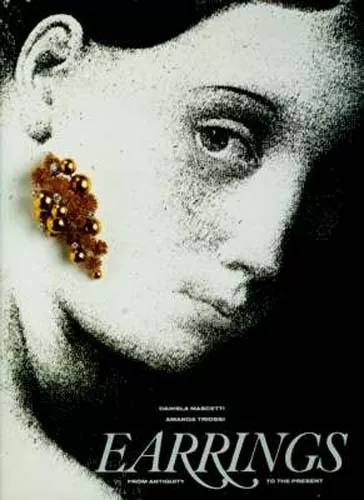
HUGE Antique Ancient Earrings Jewelry 600 ColorPix Medieval Renaissance Art Deco
£103.60 Buy It Now 25d 21h
Zadora "America's" Faberge Million $$ Jewelry Carved Gems objets d’art Sculpture
£92.44 Buy It Now 23d 22h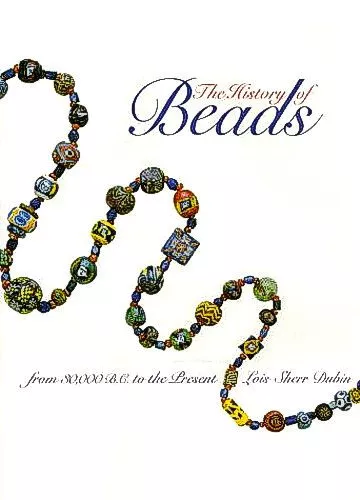
History Ancient Beads From 30,000BC Lavish Pix Magic Mystic Medieval Renaissance
£95.63 Buy It Now 22d 2h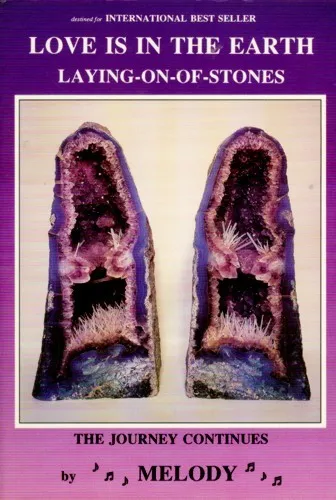
Laying on of Stones: Ancient Metaphysical Properties Chakra Arrays Crystal Gems
£47.81 Buy It Now 14d 20h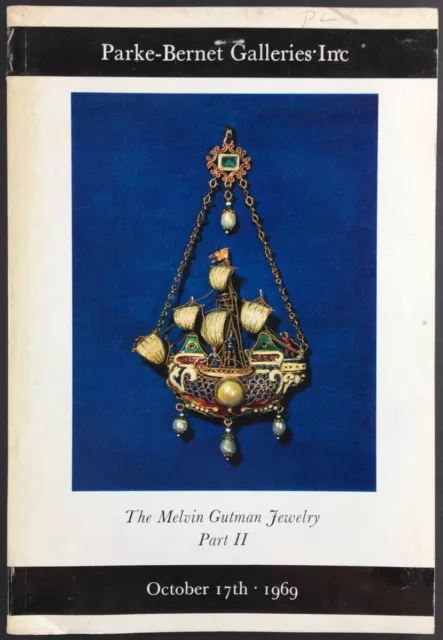
Gutman Antique Jewelry Collection 1969 Auction Catalog #2 - Medieval Renaissance
£19.92 Buy It Now 6d 1h
Smithsonian Rocks & Gems Fossils & Crystals Diamond Emerald Ruby Sapphire 450pix
£79.69 Buy It Now 17d 3h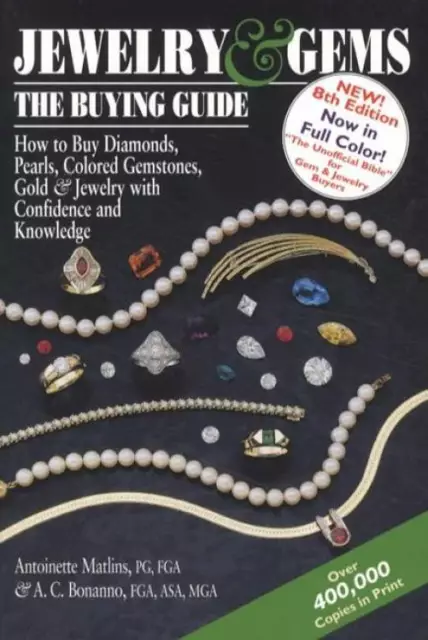
2016 Jewelry & Gems Buying Guide 8th Ed Diamonds Gems Gold Pearls & More
£31.87 Buy It Now 30d 13h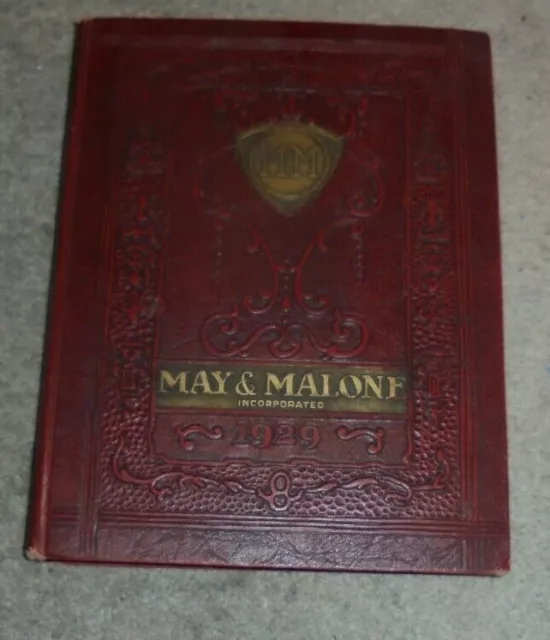
Antique Trade Catalog Watch Diamond Jewelry Gems Gold Silver Ring Art Deco Store
£198.72 Buy It Now 19d 3h
Ancient Engraved Gems Finger Rings Etruscan Persia Greek Hellenic Jewelry Oxford
£278.94 Buy It Now 28d 22h
Ancient Rings Jewelry Engraved Gems Roman Greek Minoan Byzantine Medieval Europe
£956.40 Buy It Now 9d 19h
Renaissance Royal Jewelry Gems France Italy Spain Portugal England German Dutch
£318.79 Buy It Now 15d 7h
Seals Finger Rings Engraved Gems Amulets Sassanian Bactrian Akkadian Greece Rome
£318.79 Buy It Now 29d 1h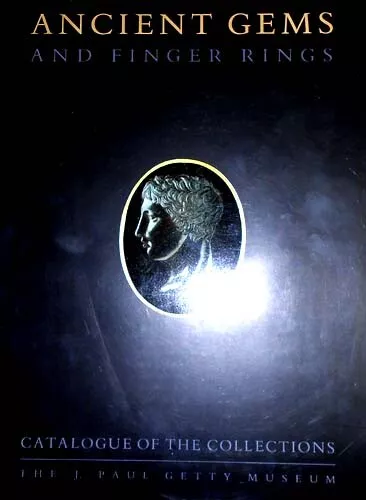
Ancient Engraved Gems Finger Rings Sasanian Persian Syrian Roman Seals Scarabs
£363.42 Buy It Now 2d 20h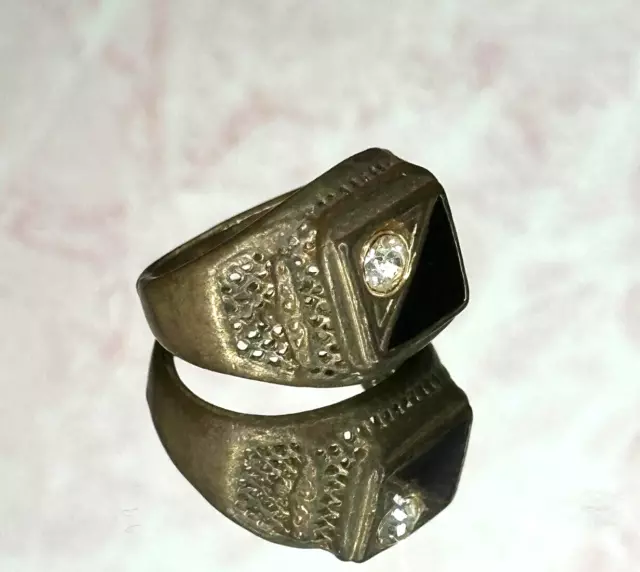
Ancient Roman Bronze Ring-Rare Authentic Artifact,Antique Jewelry Collector's
£32.90 Buy It Now or Best Offer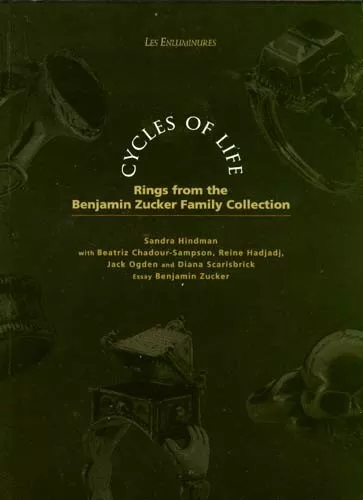 12 watchers
12 watchersAncient Rings Jewelry 200-1900AD Roman Baroque Gothic Renaissance Jewish Wedding
£117.15 Buy It Now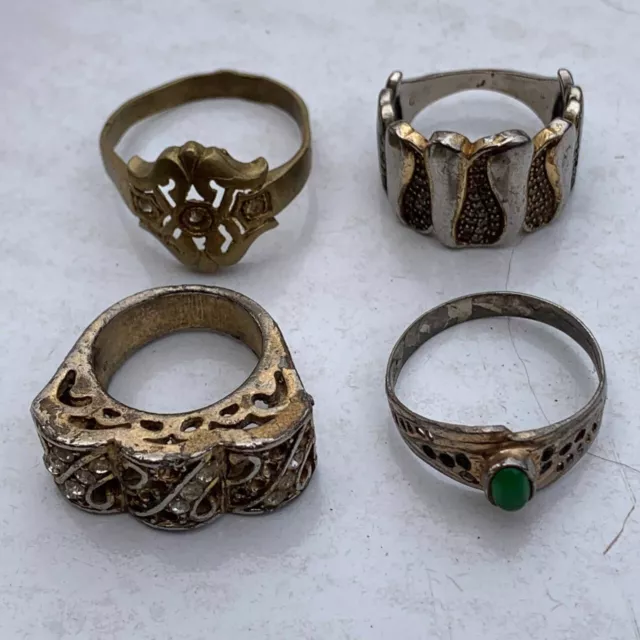
Ancient Roman Greek Sasanian Style Jewelry Bronze a lot of 4 Rings Antiquity
£43.04 Buy It Now or Best Offer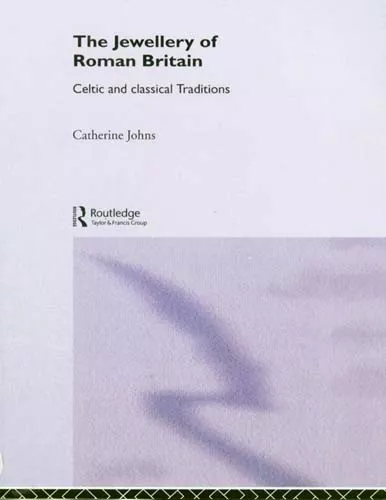 11 watchers
11 watchersRoman Britain Celtic Jewelry Manufacture Rings Earrings Necklaces Bracelets Gems
£92.76 Buy It Now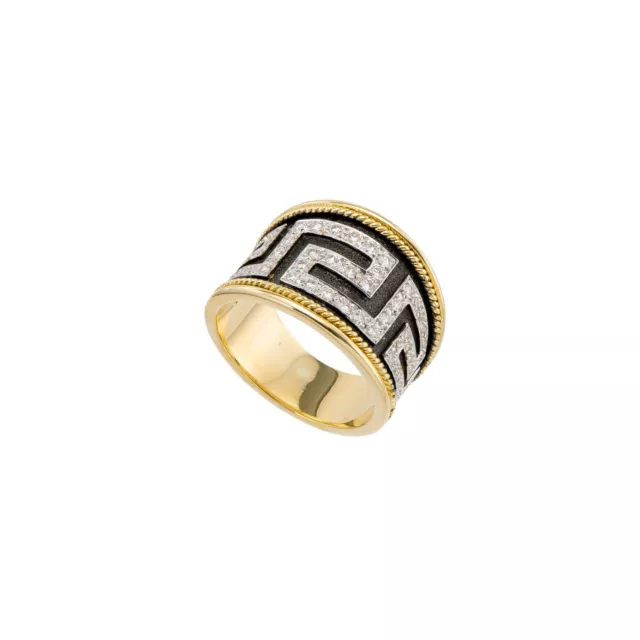
Greek Key Band Ring 18k Yellow Gold with Diamonds Ancient Greek Jewelry
£2,873.20 Buy It Now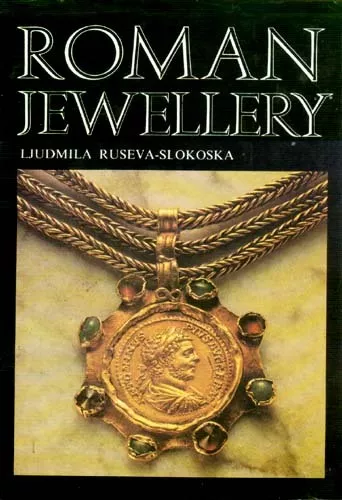 22 watchers
22 watchersRoman Jewelry Rings Earrings Bracelets Torques Pendants Hair Moesia Thrace RARE
£573.83 Buy It Now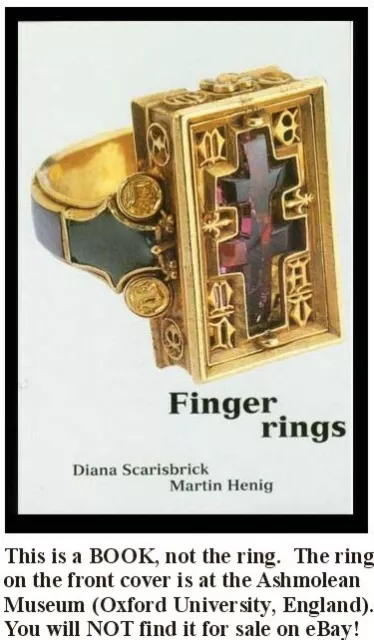 5 watchers
5 watchersAncient Finger Rings Egyptian Roman Greek Minoan Hellenic Byzantine Middle Ages
£398.49 Buy It Now
Finger Rings Jewelry History Ancient to Present 290 Pix Roman Medieval Byzantine
£75.78 Buy It Now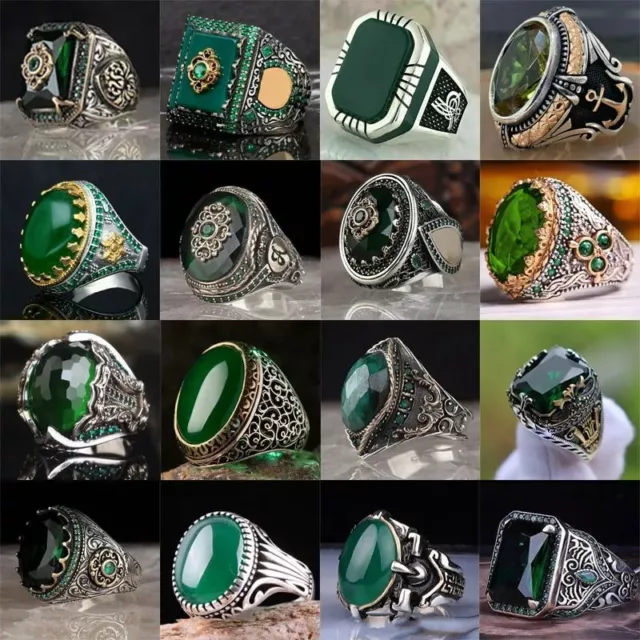
Men's Luxury Rings Retro Turkish Ring Green Gem Inlaid Ancient Jewelry Fashion
£11.45 Buy It Now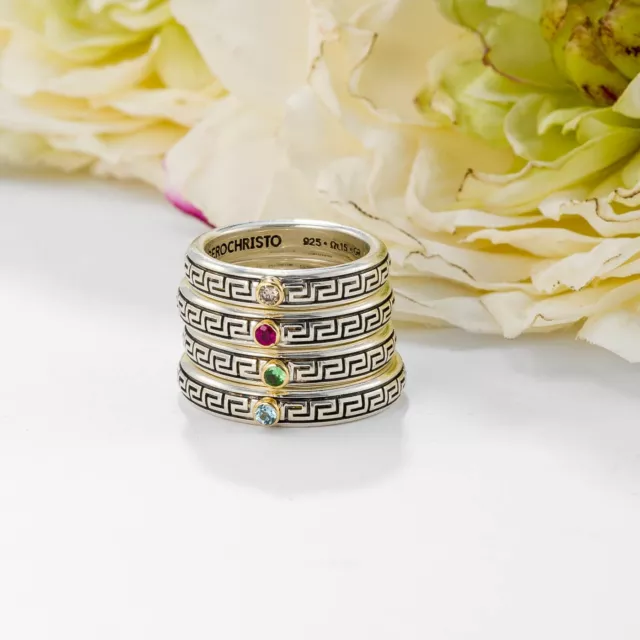
Meander Band Ring in k18 Yellow Gold with Sterling Silver and Gemstone
£196.26 Buy It Now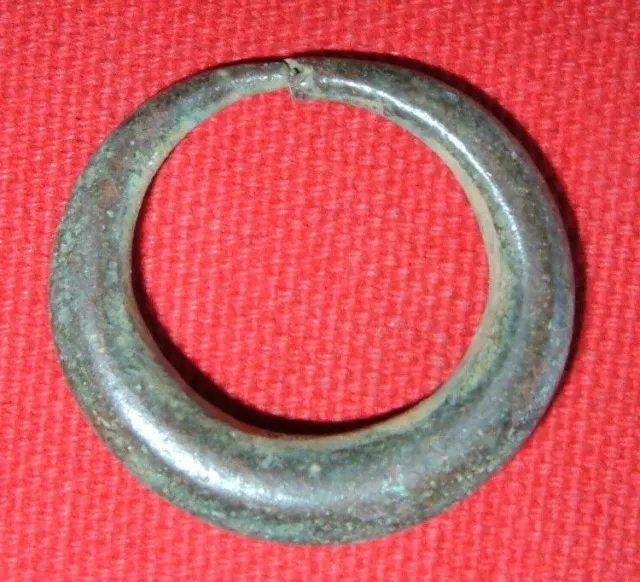 4 watchers
4 watchersAncient Tapered Bronze Ring, Roman Armor Part / Jewelry? (1,500-2,000 Years Old)
£23.91 Buy It Now or Best Offer 8 watchers
8 watchersFinger Rings Intaglio Gems Greek Bronze Age Classical Crete Mycenae Roman Persia
£176.93 Buy It Now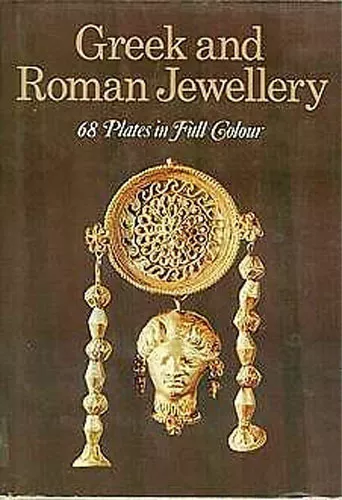 35 watchers
35 watchersGreek Roman Hellenic Etruscan Gold Jewelry Manufacture Rings Fibulae 68 ColorPix
£45.42 Buy It Now 4 watchers
4 watchersAncient Finger Rings Egypt Rome Greek Hittite Crete Medieval Victorian Byzantine
£119.54 Buy It Now
Greek Roman Hellenic Etruscan Jewelry Trade Production Rings Fibulae 68 ColorPix
£84.01 Buy It Now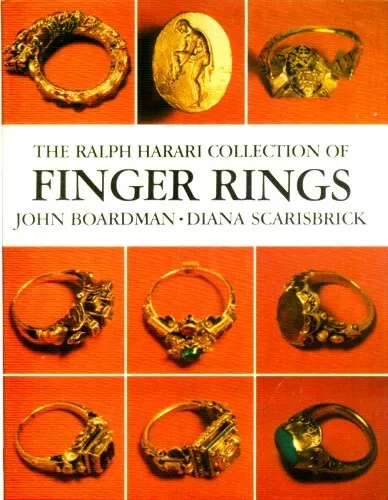
Ancient Finger Rings Egypt Rome Greece Etruria Byzantium Medieval Sassanid Islam
£1,096.19 Buy It Now
Ancient Finger Rings Egypt Rome Byzantium Greek Hittite Minoan Medieval Hellenic
£216.53 Buy It Now 3 watchers
3 watchersGreek Roman Hellenic Etruscan Jewelry Trade Production Rings Fibulae 68 ColorPix
£69.81 Buy It Now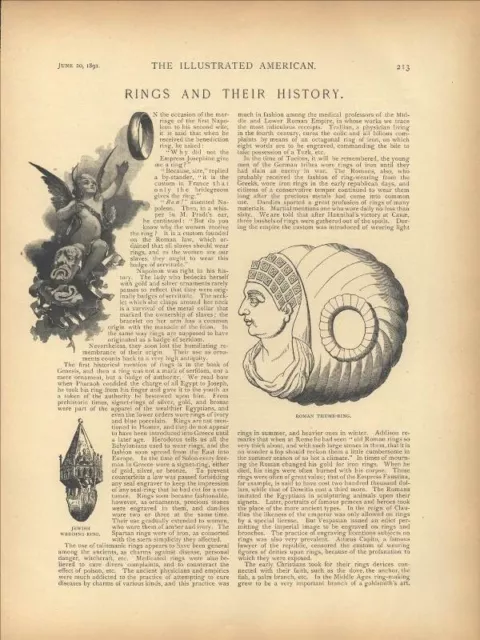
1891 Rings Roman Thumb Jewish Wedding Gemel Etruscan Motto Ring History Article
£15.10 Buy It Now 1 watcher
1 watcherAncient Finger Rings Ashmolean Egypt Rome Greece Celt Hittite Minoan Medieval
£274.04 Buy It Now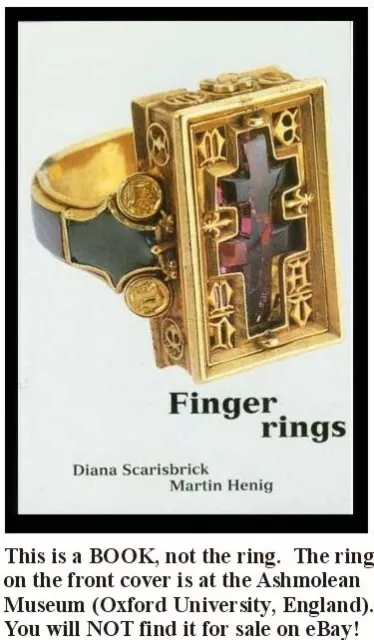 4 watchers
4 watchersAshmolean Ancient Finger Rings Rome Greece Minoan Hittite Egyptian Celt Medieval
£199.24 Buy It Now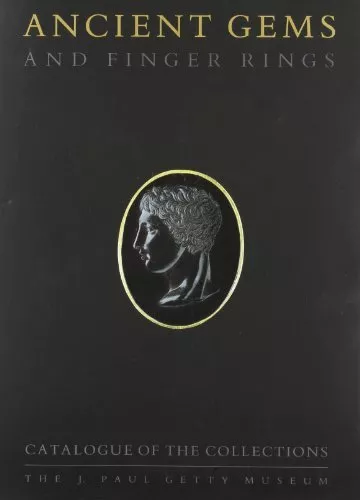
ANCIENT GEMS AND FINGER RINGS By Jeffrey Spier - Hardcover
£94.01 Buy It Now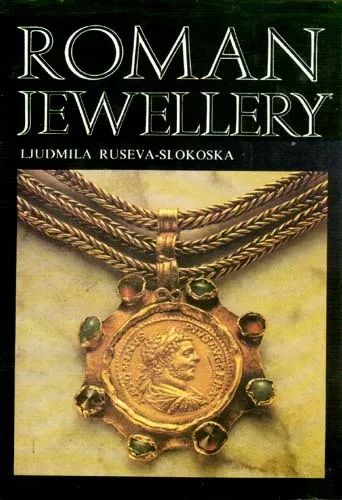 1 watcher
1 watcherAncient Roman Moesia Thrace Jewelry Rings Earrings Bracelets Torques Pendants
£573.83 Buy It Now
